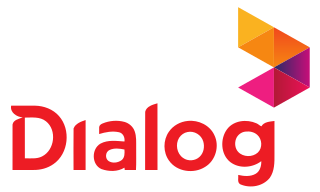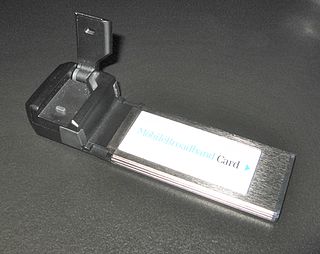This section needs additional citations for verification .(April 2024) |
Telecommunications in Sri Lanka commenced in 1858 after the first telegraphic circuit between Colombo and Galle was commenced. The sector continues to grow in the modern times.
This section needs additional citations for verification .(April 2024) |
Telecommunications in Sri Lanka commenced in 1858 after the first telegraphic circuit between Colombo and Galle was commenced. The sector continues to grow in the modern times.
Landlines in use:![]() 3,838,291 (December, 2021)
3,838,291 (December, 2021)
Mobile Phones in use: ![]() 30,824,128 (December, 2021)
30,824,128 (December, 2021)
Excellent domestic service in urban and semi urban areas. Inadequate service in rural and remote areas (2010), good international service (2010). The latest trend is the Fixed 4G LTE and 5G technologies, because of this technology many Sri Lankans who live in rural and remote areas can now access a good telephone and broadband internet service.
The national trunk network consists mostly of digital microwave radio relay and fiber-optic links are now in use in the Colombo City and all major cities and towns
Two submarine cables to India and the Maldives; one Satellite earth stations - Intelsat (Indian Ocean) (2009)
| Operator | Technology |
|---|---|
| Dialog | WiMAX, LTE TDD, VoLTE, FTTH, Wi-Fi |
| Lanka Bell [Disconnected] | WiMAX, LTE TDD, CDMA |
| SLTMobitel | ADSL2+, VDSL2, LTE TDD, VoLTE, FTTH, Wi-Fi |
| Operator | Technology |
|---|---|
| Airtel | GPRS, EDGE, HSPA, HSPA+, DC-HSPA+, LTE FDD, VoLTE (Testing), 5G (Trial) |
| Dialog | GPRS, EDGE, UMTS, HSPA, HSPA+, DC-HSPA+, LTE FDD, LTE-A, VoLTE, VoWiFi, 5G (Trial), VoNR (Trial) |
| Hutch | GPRS, EDGE, UMTS, HSPA, HSPA+, DC-HSPA+, LTE FDD, VoLTE (Testing), 5G (Trial) |
| SLTMobitel | GPRS, EDGE, UMTS, HSPA, HSPA+, DC-HSPA+, LTE FDD, LTE-A, VoLTE, VoWiFi, 5G (Trial) |
The history of the internet in Sri Lanka began with the launch of the Lanka Education and Research Network (LEARN) in 1992. The network was only made available to educational and research communities. In the 1985/1986 period with the use of an old TRS 80 model which ran Xenix, computer engineers and scholars were able to demonstrate a remote login from University of Moratuwa (UoM) which connected a computer in University of Colombo for the first time.
This section needs additional citations for verification .(April 2024) |
Postal Service: Sri Lanka Post
Radio broadcast stations: AM 15, FM 54, SW 5
Television broadcast stations: 19 (2009)
Satellite Earth Stations located: Padukka and Colombo
Internet Service Providers : 9
Country code / Top-level domain: +94/LK
LIRNEasia's Telecommunications Regulatory Environment (TRE) index, which summarizes stakeholders' perception on certain TRE dimensions, provides insight into how conducive the environment is for further development and progress. The most recent survey was conducted in July 2008 in eight Asian countries, including Bangladesh, India, Indonesia, Sri Lanka, Maldives, Pakistan, Thailand, and the Philippines. The tool measured seven dimensions: i) market entry; ii) access to scarce resources; iii) interconnection; iv) tariff regulation; v) anti-competitive practices; and vi) universal services; vii) quality of service, for the fixed, mobile and broadband sectors.
In Sri Lanka, the mobile sector receives higher scores than the fixed sector for all dimensions excepting interconnection. The broadband sector lags behind both the fixed and mobile sectors in all but one of the parameters (regulation of anti-competitive practices). What also emerges in the results illustrated above is that all the sectors – other than mobile sector USOs – fall below the 5.00 average performance level. [2]
Centre for Telecommunication Research is a research-based institute at the Sri Lanka Technological Campus (SLTC) to carry out innovative, collaborative and industry-sponsored research works in wireless communications and networking. Research activities at the CTR, both fundamental and applied, mainly focus on technologies related to the physical, data-link and network layers of communication systems, and optical communication.
Sri Lanka initiated to produce telecommunication, specially smartphones with the collaboration of foreign companies that already in the leading market. [3]
Telecommunications in Ireland operate in a regulated competitive market that provides customers with a wide array of advanced digital services. This article explores Ireland's telecommunications infrastructure including: fixed and mobile networks, The voice, data and Internet services, cable television, developments in next-generation networks and broadcast networks for radio and television.
Telecommunications in Mongolia face unique challenges. As the least densely populated country in the world, with a significant portion of the population living a nomadic lifestyle, it has been difficult for many traditional information and communication technology (ICT) companies to make headway into Mongolian society. With almost half the population clustered in the capital of Ulaanbaatar, most landline technologies are deployed there. Wireless technologies have had greater success in rural areas.
Telecommunications in the Philippines are well-developed due to the presence of modern infrastructure facilities. The industry was deregulated in 1995 when President Fidel Ramos signed Republic Act No. 7925. This law opened the sector to more private players and improved the provision of telecom services are better and fairer rates, leading to the creation of many telecommunication service providers for mobile, fixed-line, Internet and other services.

Telecommunications infrastructure in South Africa provides modern and efficient service to urban areas, including cellular and internet services. The Independent Communications Authority of South Africa (ICASA) is the watchdog of the telecommunications in the country.

Emirates Telecommunications Group Company PJSC, doing business as etisalat and, is a UAE state-owned telecommunications company. It is the 18th largest mobile network operator in the world by number of subscribers.
4G is the fourth generation of broadband cellular network technology, succeeding 3G and preceding 5G. A 4G system must provide capabilities defined by ITU in IMT Advanced. Potential and current applications include amended mobile web access, IP telephony, gaming services, high-definition mobile TV, video conferencing, and 3D television.
Dhiraagu is the first Maldivian telecommunications company, which was founded in 1988. The company was created as a joint venture of the Maldivian government and Cable & Wireless and had a monopoly on the entire industry in the country until 2005, and retained a monopoly on fixed telephony and the exclusive right to terminate incoming international traffic on any network until the end of 2008.

Dialog Axiata PLC, is one of Sri Lanka's largest telecommunications service providers, and the country's largest mobile network operator with over 17 million subscribers which amounts to 57% of the Sri Lankan mobile market. Dialog is a subsidiary of Axiata Group Berhad which owns 83.32% controlling stake of the company, while the rest is held by the public.
Yettel Bulgaria is the largest mobile network and the third largest fixed telecommunications company in Bulgaria. The company was founded under the name "Cosmo Bulgaria Mobile" in 2001 by OTE and operated under the brand name "Globul" until 2014. In 2013 it was bought by Telenor and changed its name. In August 2018, the company was acquired by PPF, a Czech private investment fund. The company continued to use the Telenor brand until 1 March 2022, when it was renamed to Yettel Bulgaria. In February 2024, the company was acquired by e& (Etisalat), and the merger was approved by Bulgaria's competition watchdog. However the branding of Yettel has not yet been changed.

Sri Lanka Telecom PLC, doing business as SLT-MOBITEL, is the national telecommunications services provider in Sri Lanka and one of the country's largest companies with an annual turnover in excess of Rs 40 billion. The company provides domestic and corporate services which include fixed and wireless telephony, Internet access and IT services to domestic, public and business sector customers. As of 2018 SLT-MOBITEL was Sri Lanka's second largest mobile network operator with over 7.9 million subscribers.

Mobile broadband is the marketing term for wireless Internet access via mobile networks. Access to the network can be made through a portable modem, wireless modem, or a tablet/smartphone or other mobile device. The first wireless Internet access became available in 1991 as part of the second generation (2G) of mobile phone technology. Higher speeds became available in 2001 and 2006 as part of the third (3G) and fourth (4G) generations. In 2011, 90% of the world's population lived in areas with 2G coverage, while 45% lived in areas with 2G and 3G coverage. Mobile broadband uses the spectrum of 225 MHz to 3700 MHz.
Internet access is widely available in New Zealand, with 94% of New Zealanders having access to the internet as of January 2021. It first became accessible to university students in the country in 1989. As of June 2018, there are 1,867,000 broadband connections, of which 1,524,000 are residential and 361,000 are business or government.
Since its beginnings in 1995, the Internet in Malaysia has become the main platform for free discussion in the country's otherwise tightly controlled media environment. As of Q1 2017, Malaysia had broadband penetration rates of 103.6% and 81.8%.

Internet in Moldova is one of the fastest and least expensive in the world. The country ranks 3rd in the world by gigabit coverage with around 90% of the population having the option to subscribe to a gigabit plan. The overall infrastructure is well developed which allows many users to experience good quality services throughout the country. However, despite high speeds and cheap prices, the penetration level is quite low when compared with many EU or CIS countries. In 2018, 49% of Moldovan households had broadband access. In 2015, there were 80 registered Internet Service Provider's (ISP's) in the country, with the majority being local or regional with only a few offering their services throughout the country. Moldtelecom and StarNet are the country's leading providers sharing around 88% of the market. The remaining 12% are shared between other ISPS, like SunCommunications, Arax Communications and others. Almost all ISPs that offer their services across the country have their headquarters located in the capital-city of Chişinău.
In Romania, there are 18.8 million connections to the Internet. Romania's country code is .ro. The .eu domain is also used, as it is shared with other European Union member states. There were over 600 000 domains registered under .ro at the end of 2012.
In telecommunications, long-term evolution (LTE) is a standard for wireless broadband communication for mobile devices and data terminals, based on the GSM/EDGE and UMTS/HSPA standards. It improves on those standards' capacity and speed by using a different radio interface and core network improvements. LTE is the upgrade path for carriers with both GSM/UMTS networks and CDMA2000 networks. Because LTE frequencies and bands differ from country to country, only multi-band phones can use LTE in all countries where it is supported.
International Mobile Telecommunications-Advanced are the requirements issued by the ITU Radiocommunication Sector (ITU-R) of the International Telecommunication Union (ITU) in 2008 for what is marketed as 4G mobile phone and Internet access service.
3G mobile telephony was relatively slow to be adopted globally. In some instances, 3G networks do not use the same radio frequencies as 2G so mobile operators must build entirely new networks and license entirely new frequencies, especially so to achieve high data transmission rates. Other delays were due to the expenses of upgrading transmission hardware, especially for UMTS, whose deployment required the replacement of most broadcast towers. Due to these issues and difficulties with deployment, many carriers delayed acquisition of these updated capabilities.